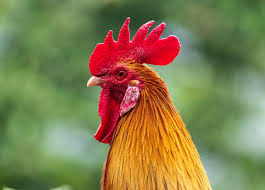Tilmicosin
Name:
Tilmicosin
Common Capacity:
- Injection Solution: 50ml/bottle, 100ml/bottle
- Premix Powder/Water Soluble Powder/Liquid Solution:100g, 500g, 1kg or 1L, etc., customizable) OEM/CUSTOMIZED
Common Concentration:
- Injection Solution: 25% (250mg/ml), 30% (300mg/ml)
- Premix Powder/Water Soluble Powder/Liquid Solution: 10%, 20%, 25%, 30%, 50% etc. (customizable)
Applicable Animals:
Tilmicosin is a semi-synthetic macrolide antibiotic that primarily exerts its antibacterial effect by inhibiting bacterial protein synthesis. It has potent antibacterial activity against Mycoplasma, Pasteurella, Actinobacillus pleuropneumoniae, other Gram-positive bacteria, and some Gram-negative bacteria. Tilmicosin achieves high concentrations in lung tissue and persists for an extended period, making it an ideal choice for the treatment and prevention of respiratory diseases.
Applicable Animals in Global Animal Husbandry:
- Poultry (Chickens, Turkeys, etc.): Primarily used for the treatment and prevention of respiratory system diseases such as chronic respiratory disease (CRD), infectious coryza, airsacculitis, and fowl cholera, caused by Mycoplasma (e.g., Mycoplasma gallisepticum, Mycoplasma synoviae) and Pasteurella (e.g., fowl cholera).
- Pigs: Primarily used for the treatment and prevention of respiratory system diseases such as porcine pleuropneumonia (caused by Actinobacillus pleuropneumoniae), porcine mycoplasmal pneumonia (enzootic pneumonia), porcine atrophic rhinitis, and streptococcosis. It also has some efficacy against digestive tract infections caused by sensitive bacteria.
- Cattle (Calves): Used for the treatment and prevention of bovine respiratory disease (shipping fever) caused by Pasteurella, Mannheimia haemolytica, Mycoplasma, etc.
- Sheep: Used for the treatment and prevention of respiratory infections caused by sensitive bacteria, such as goat pneumonia.
Usage and Dosage:
The usage and dosage of Tilmicosin vary depending on the dosage form, animal species, and treatment objective. Strict adherence to veterinary guidance or product instructions is essential.
Injection Solution (Primarily for Cattle, Sheep, Pigs):
- Cattle (Subcutaneous injection): 10 mg per kg body weight (i.e., 0.04 ml of 25% Tilmicosin Injection per kg body weight). Administer once.
- Sheep (Subcutaneous injection): 5-10 mg per kg body weight. Administer once.
- Pigs (Intramuscular injection): 10 mg per kg body weight (i.e., 0.04 ml of 25% Tilmicosin Injection per kg body weight). Administer once.
- Note: Pig injection dosage must be strictly controlled, as high doses can lead to adverse reactions. Intravenous injection is not recommended.
Liquid Solution/Water Soluble Powder (Primarily for Poultry, Pigs):
- Poultry (Drinking water administration):
- For Treatment: Add 15-30 mg of active ingredient per liter of drinking water, for 3-5 consecutive days.
- Example for 20% Water Soluble Powder: Add 75-150 grams of product per ton of water.
- Pigs (Drinking water administration):
- For Treatment: Add 15-20 mg of active ingredient per liter of drinking water, for 5 consecutive days.
- Example for 20% Water Soluble Powder: Add 75-100 grams of product per ton of water.
Premix Powder (Primarily for Pigs, Poultry mixed with feed):
- Pigs (Mixed with feed): Add 150-200 grams of active ingredient per ton of feed, for 7-14 consecutive days.
- Poultry (Mixed with feed): Add 150-200 grams of active ingredient per ton of feed, for 3-5 consecutive days.
Dosage by Growth Stage:
- Piglets/Nursery Pigs: Used for the prevention and treatment of post-weaning respiratory syndrome, as well as Mycoplasmal pneumonia, Actinobacillus pleuropneumoniae. Early intervention can significantly reduce morbidity and mortality.
- Growing-finishing Pigs: Used to control chronic respiratory diseases, improve feed conversion rate and daily weight gain.
- Calves: Used for the prevention and treatment of respiratory diseases caused by transport stress.
- Chicks/Broilers: Used to control Mycoplasma contamination and bacterial respiratory infections.
Applicable Diseases and Symptoms:
Tilmicosin is primarily used for the treatment of diseases caused by sensitive bacteria and Mycoplasma:
- Pigs:
- Respiratory System Diseases: Porcine pleuropneumonia (caused by Actinobacillus pleuropneumoniae), porcine mycoplasmal pneumonia (enzootic pneumonia, caused by Mycoplasma hyopneumoniae), porcine bacterial pneumonia (Pasteurellosis), porcine atrophic rhinitis.
- Poultry:
- Respiratory System Diseases: Chicken chronic respiratory disease (CRD, caused by Mycoplasma gallisepticum, Mycoplasma synoviae), infectious coryza, airsacculitis, fowl cholera.
- Cattle (Calves):
- Respiratory System Diseases: Bovine respiratory disease complex (BRDC, commonly known as “shipping fever”), primarily caused by Pasteurella and Mannheimia haemolytica.
Precautions:
- Cardiac Toxicity: Tilmicosin has cardiac toxicity in mammals (especially horses and humans).
- Do not administer intravenously. Intramuscular injection in pigs should not exceed 20 mg/kg.
- Strictly control subcutaneous injection dosage in ruminants like cattle.
- Prohibited for use in equidae such as horses and donkeys.
- Operators should avoid accidental self-injection. Accidental injection in humans can be fatal; seek emergency medical attention.
- Withdrawal Period:
- Cattle: 28 days (for meat)
- Sheep: 28 days (for meat)
- Pigs: 14 days (for meat)
- Poultry: 7 days (for meat)
- Not for use in laying hens during egg production.
- Incompatibility: Avoid concomitant use with beta-lactam and aminoglycoside antibiotics, as antagonism may occur.
- Cross-resistance with other macrolide drugs.
- Storage: Store in a cool, dark, and tightly sealed place.
Contraindications:
- Contraindicated in animals with a known hypersensitivity to Tilmicosin or other macrolide antibiotics.
- Use with caution or contraindication in pregnant animals, especially during early gestation.
- Intravenous injection is strictly prohibited.
- Strictly prohibited for use in equidae such as horses and donkeys.
- Not for use in laying hens during egg production.
- Not for use in lactating dairy cows.
- Do not use concomitantly with ionophore anticoccidials (e.g., Monensin, Salinomycin, Methylsalinomycin).
Post-Administration Care:
- Observe Animal Response: Closely monitor the injected animals (especially pigs) for several hours after administration for signs of toxicity such as respiratory distress, abnormal heart rate, or depression.
- Provide Supportive Treatment: For animals exhibiting adverse reactions, immediately provide symptomatic and supportive therapy, such as ensuring ample drinking water, maintaining a comfortable environment, and using antidotes (if applicable and clearly defined).
- Environmental Improvement: Maintain a clean, dry, and well-ventilated breeding environment to reduce pathogen load, which aids in animal recovery.
- Strictly Enforce Withdrawal Period: Ensure animal products fully comply with drug residue standards before market release, ensuring food safety.
- Enhance Biosecurity: For outbreak of respiratory diseases, in addition to treatment, enhance biosecurity measures such as isolation and disinfection to prevent disease spread.
Applicable Animals
Animal species suitable for this veterinary medication


